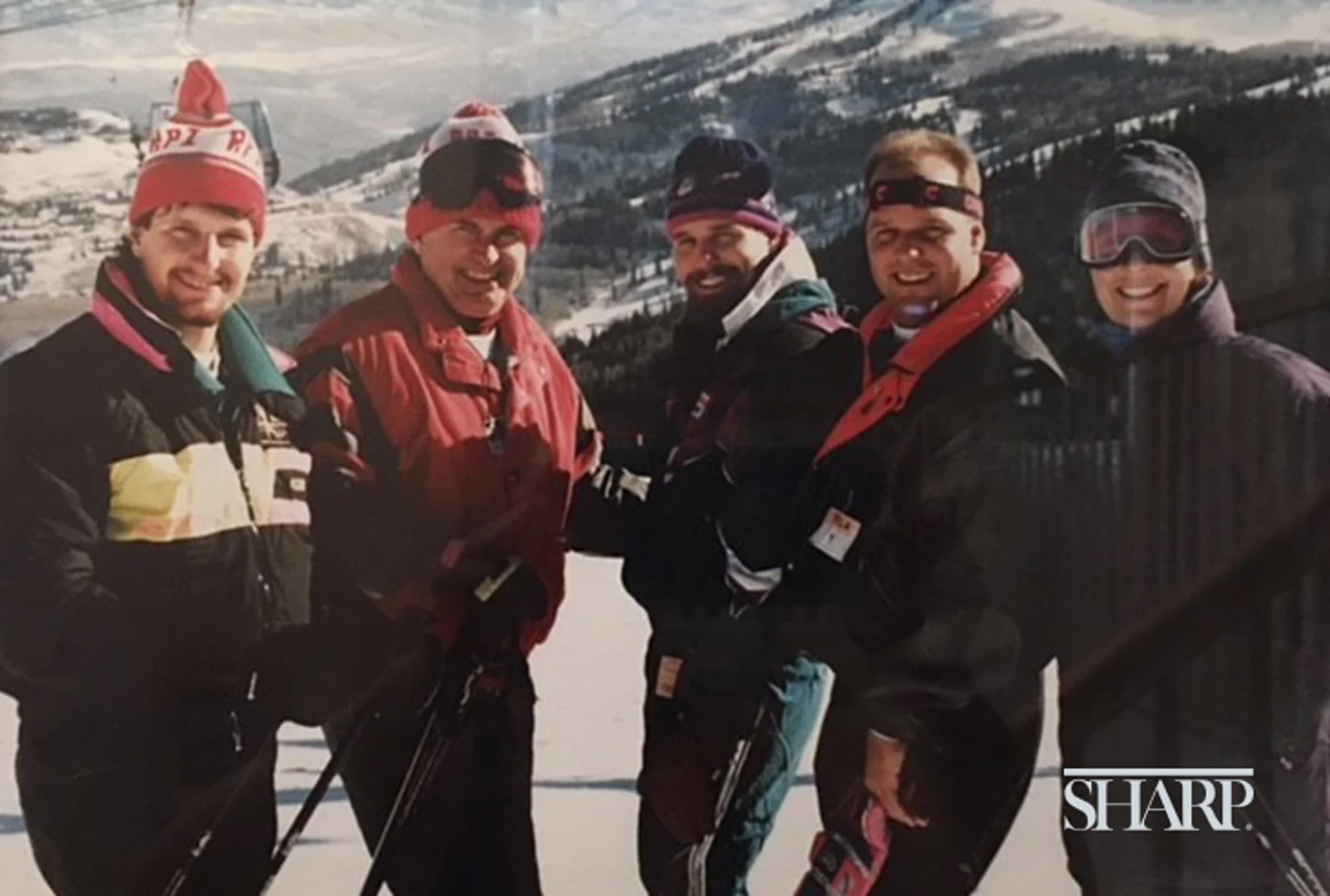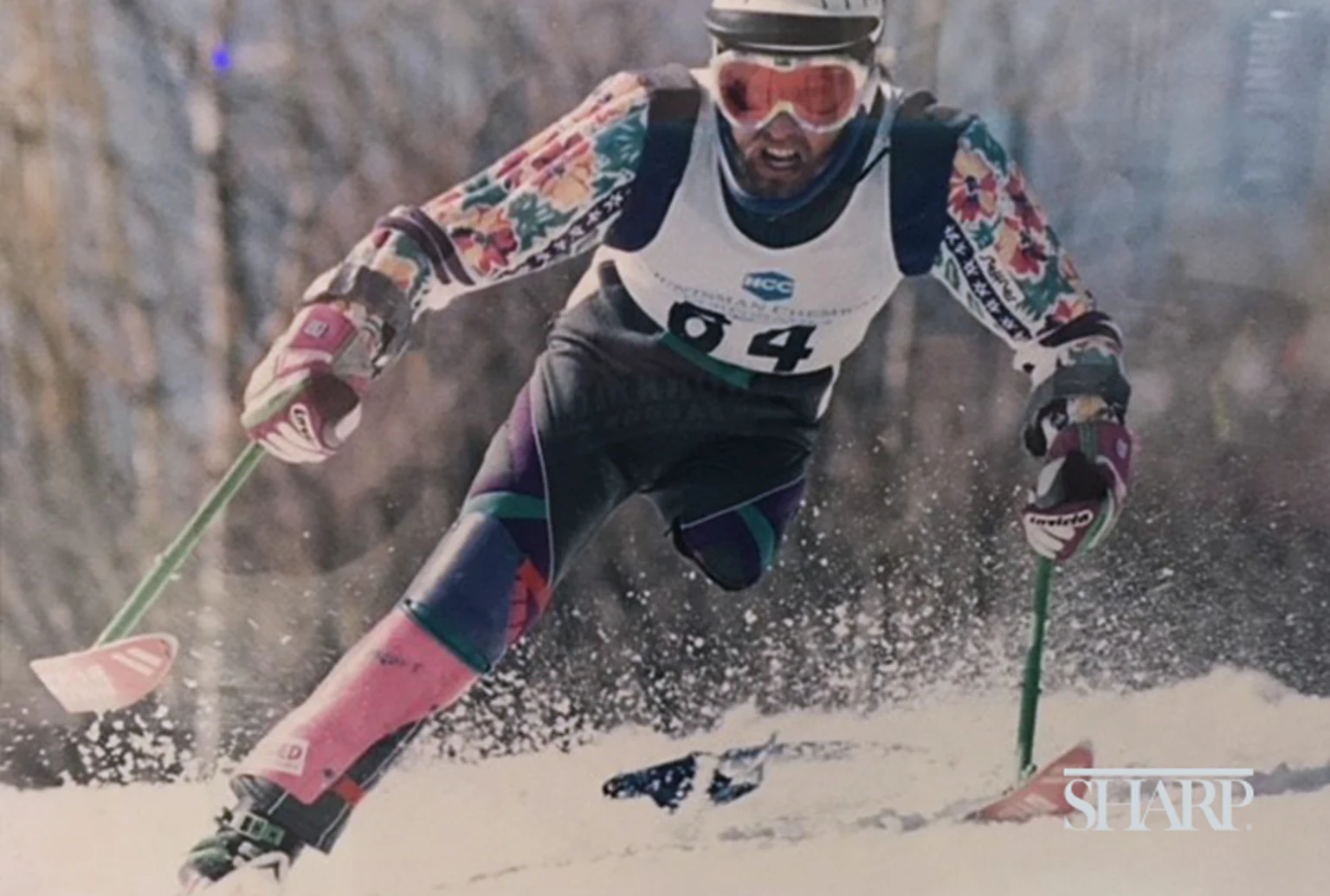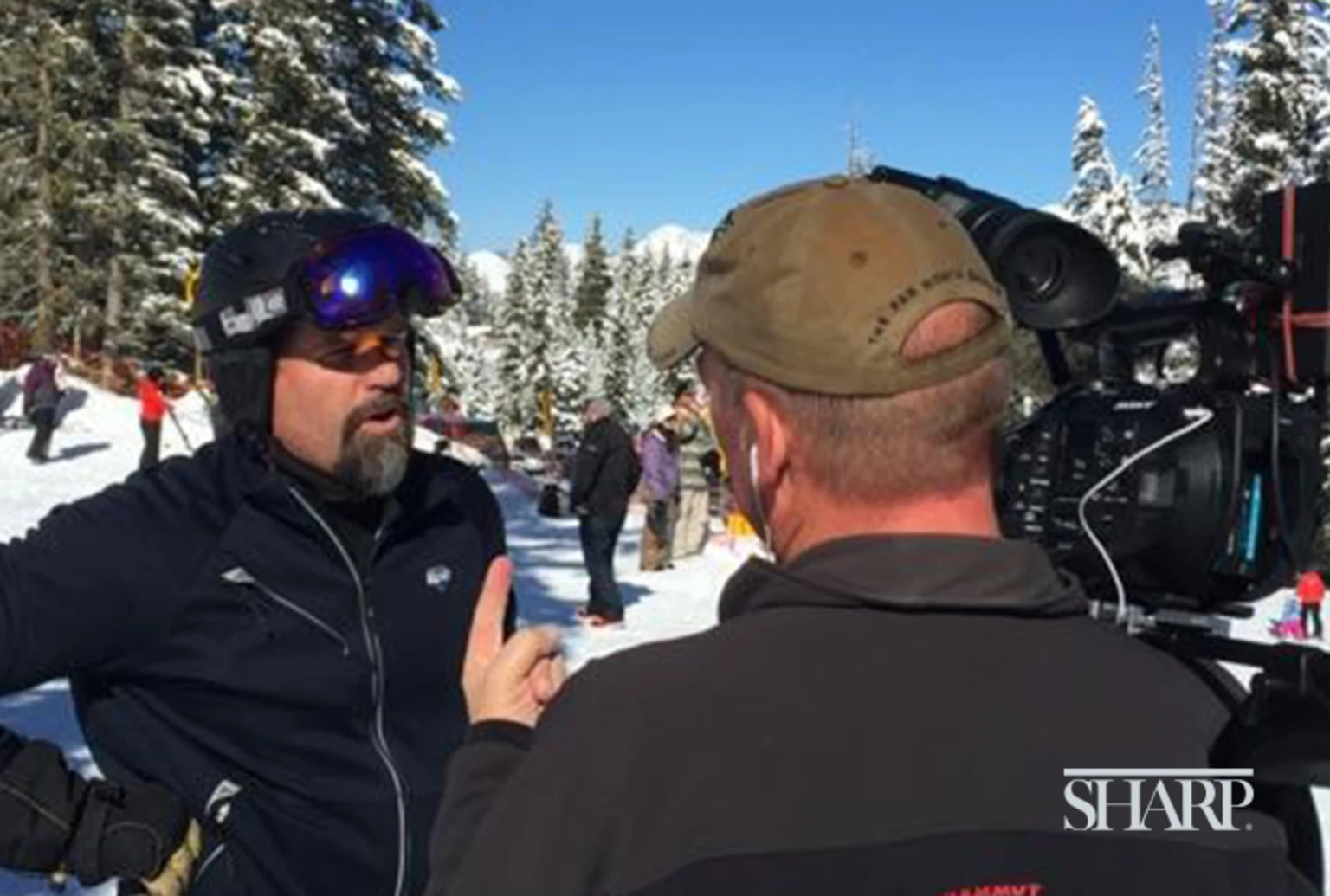
The holiday season brings spike in heart attacks
According to the American Heart Association, more people die from heart attacks during the last week of December than any other time of the year.
To say that Matthew Geriak aims big is an understatement. The Sharp research pharmacist is literally on the hunt for a cancer cure, managing studies for drugs that might end the disease once and for all.
Cancer care, in general, is near and dear to his heart, as the disease took his leg in 1984. An avid skier his whole life, the experience brought him to his second heroic ambition: to help create a prosthetic leg for amputees so they could feel the freedom of skiing again.
The leg, called the Bartlett Tendon Knee (BTK), still has a long way to go. Yet the technology already far surpasses what's out there.
"With one leg, people think it's about balance," he says. "It's really about strength. Your working leg must take on such immense pressure. My goal is to help take that pressure off, so other amputees can experience the same joys of skiing that I have."
A childhood passion
Born and raised in Orange County, it's hard to believe that skiing, and not surfing, has been Matthew's passion since age 5. But snow is practically in Matthew's DNA. Sandwiched in a car between his two brothers and one sister, Matthew grew up taking regular treks to Park City, Utah — where his family had a second home.
"Park City will always be my favorite place to ski," he says. "I have so many great memories of skiing with my family there. Even though I grew up in Southern California, Park City feels like my true old stomping ground."
From the start, Matthew loved the speed of skiing, especially the g-forces he felt when going through a turn. "I always felt so free when I was skiing," he says. "And of course, I loved the danger."

Matthew, in the middle, posed with his family on a trip to Utah: (l-r) His brother Andy, his dad Jim, his brother Tim and his mom Sue.
When it came time to choose a college, Matthew was ready to throw himself full force into skiing. He enrolled in the University of Colorado at Boulder, and joined the ski team. As training began, Matthew was eager to create a life surrounded by books and ski slopes. Then came the diagnosis that would change his life forever.
Cancer clues and a devastating diagnosis
While training, Matthew began feeling pain in his calf. A seasoned athlete, he wrote it off as muscle soreness. But when the pain didn't stop, he visited the health center, triggering a series of misdiagnoses.
"They kept telling me it was just a torn muscle," Matthew says. "I don't blame them. With the intensity we were training, lots of skiers tear muscles. And at my age, in my physical condition, no one would have expected the pain to be from cancer."
One biopsy later and Matthew was delivered difficult news: At 21 years old, there was a tumor growing in his left calf muscle, identified as an "undifferentiated pleomorphic sarcoma." He underwent immediate surgery, and the medical team was able to remove the cancer, while saving his leg.
Nine months later, the cancer came back. This time, Matthew's medical team had no other choice but to do an above the knee amputation. "Even with the amputation, there was a high risk that the cancer would come back within five years," he says. "The tumor that recurred had a mitotic rate that was very high. I couldn't believe it. I even got a second opinion in Rochester at the Mayo Clinic, and they told me the same thing. It was awful. But I had to keep reminding myself that this was the only way to save my life in the short term."
As a precautionary measure, Matthew's medical team ordered chemotherapy, and Matthew's spirits suffered. He was one year short of earning his chemistry degree, dropped out of school and had to move back home to Orange County. He felt weak, was anemic and lost all his hair. He never felt more distant from skiing, and the sense of fulfillment it brought him.
The path to recovery
After six months of chemo, Matthew knew it was time to finish his education. He was admitted to the University of Southern California, set to finish his undergraduate chemistry degree. He then went on to earn a doctorate degree in pharmacy. He was determined to tackle the disease that took his leg, and help others minimize the horrific side effects he experienced throughout his treatment.
Still, skiing kept calling him. One day, on a trip to Park City, he found an enthusiastic ski group that did an adaptive program. "They asked me, 'Do you want to be recreational, or the best in the world? I said, 'Of course I want to be the best in the world!"
Matthew knew his body needed a tremendous amount of rehab, and felt skiing was the best way to get him there. So he trained — a lot — and started skiing competitively again. While his fellow USC professors and classmates were supportive, enthusiastic and proud, it was a different group of people that truly took notice: the United States Disabled Ski Team.
"They sent me a letter, and it was the opportunity of a lifetime," says Matthew. "It was a contract to devote a minimum of five years to train full time, and start on the development team. I didn't know what to do, so I brought the letter to the Dean of Pharmacy, Dr. Biles. He read the letter, looked at me, and said, 'Go skiing.' He then agreed to hold my spot at the USC School of Pharmacy program for five years — as long as I sent him pictures of me on the podium."
On top of the world, again
Matthew dove straight into skiing once again, loving the thrill that he thought he had lost. His training took him around the globe, from New Zealand to Mt. Hood, Oregon.

Matthew competed in the Huntsman Cup in 1991, and earned gold for slalom.
His hard work earned him a spot on the U.S. Olympic team, for slalom and downhill. In 1992, Matthew joined his fellow Olympians in Albertville, France.
For the downhill race, Matthew earned fourth place, but crashed in the second heat in the slalom. "I was too aggressive," he says, noting that he was third place in the first heat of the race. "Of course you want to win when it comes to the Olympics, but the experience was just so electric, I wasn't disappointed. One of the best feelings in the world was standing on top of that mountain in France."
Matthew describes his time at the Olympics as a mix of "party and extreme seriousness," loving the opportunity to meet dedicated skiers from all corners of the earth. He forged friendships that still hold strong today, and he continues to ski with his closest friends.
One of these friends, Brian Bartlett, would go on to invent the Bartlett Tendon Knee (BTK). Years later, Brian would ask Matthew to be a part of it.
His hard work continues
When Matthew's five years of competitive skiing was up, he returned to the USC School of Pharmacy as promised. He knew his studies would mean giving up time on the slopes, but he felt reinvigorated, and ready to throw himself into curing cancer.
He eventually started working at
Sharp Memorial Hospital. "We manage studies to find chemical entities to fight cancer," he says. "We investigate drugs that aren't on the market yet, and it's a pretty exciting thing to be a part of the Sharp research team. I wanted to be instrumental in finding a cancer cure, and this is an opportunity for me to contribute."
While Matthew still finds time to ski, much of his time of late has been in support of the BTK. Inventor Brian Bartlett leans on Matthew, and a few other retired ski racers, to both test and promote it. They travel far and wide to organize demos and make constant improvements.

Matthew helps get the word out about the Bartlett Tendon Knee. He hopes the leg will revolutionize recreational skiing for fellow amputees.
"The thing that sets this knee apart from the rest is the bending resistance it offers," Matthew says. "You can't just put a boot onto a walking leg, snap it into a ski and expect good results. When you're in a bent knee position, it's hard to put pressure on the ski to drive the turn, because the knee wants to buckle on you. The BTK mimics the tendons on both sides of your knee, anchors it at the top and gives way where you need it to."
Matthew points out that ski trips are not all skiing — there's a lot of waiting in chairlift lines, climbing stairs, grabbing lunch, etc. All that standing takes a lot out of one leg, and can be excruciatingly tiring. The BTK is not easy for walking, but great for skiing and standing. It allows you to focus on the whole skiing experience, with less fatigue and muscle soreness.
Matthew would love to see the ski leg in competitive skiing someday, but for now, they're focusing solely on recreational skiers. For him, it's more about giving hope to fellow amputees — especially those who thought they'd never ski again. Because back in Boulder, all those years ago, that thought flashed for him, too.
"I have learned to never stop trying, never give up," he says. "There's always an answer for your problems and challenges. It may be something you need to invent yourself, or get people to help you with. But if you love something and want it badly enough, there's a reason for it. That's what drives me to go forward every day."
The Sharp Health News Team are content authors who write and produce stories about Sharp HealthCare and its hospitals, clinics, medical groups and health plan.

Matthew Geriak is a research pharmacist at Sharp HealthCare.

Our weekly email brings you the latest health tips, recipes and stories.